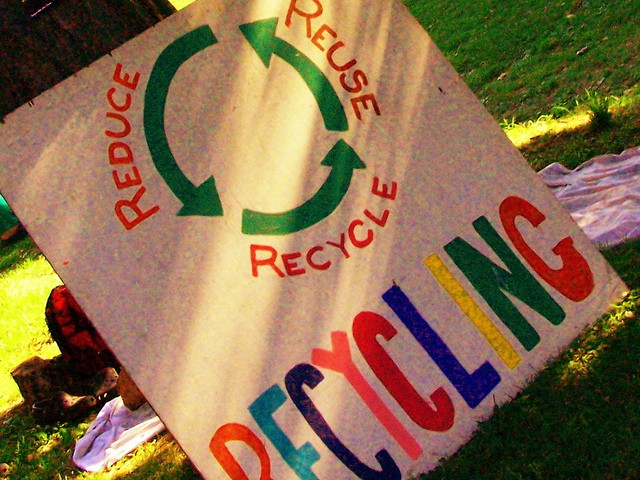Waste management is a huge field and something we’re constantly researching and developing over time. Improving methods of collecting, distributing and disposing of waste will always be important work to help protect the interests of the environment and sustain our growing population. Advances in this field have enabled us to find ways to turn waste into a reliable source of source of energy, in a sense killing two birds with one stone. This article will discuss some of the ways this can be achieved.
Reusing moderates crude materials and recoveries the extra vitality that makers would utilize delivering new items sans preparation. Reusing likewise lessens the measure of material going into landfills, which a major reward is given that numerous nations are quick coming up short on space for waste. Fortunately, reusing is simple, and can rapidly turn out to be a piece of your typical schedule.
Letting it decay
You may be surprised to here that simply letting garbage decay over time can produce a source of energy that we can use. Even when you are composting, you are essentially allows this organic waste to produce methane as it decays. In much the same way, large qualities of waste material produce methane gas, which can be stored and turned into fuel.
That said, there are more efficient and much quicker ways to convert waste into energy, particularly on a large scale.
Burning it
A form of energy can be created by burning just about anything, and waste is no different. Incinerating solid waste creates thermal energy, which we can then use to turn turbines and create electrical energy.
While relatively efficient, this process produces a number of pollutants and emissions that can potentially harm the environment. As a result it is heavily regulated in Australia and strict rules need to be adhered to to ensure safe practice, though there are many different incineration plants all over Australia.
Co-firing
No doubt you’ve heard about the potentially harmful effects that can come from the burning of coal. Co-firing involves burning coal and biomass (or waste materials) together to create energy. More environmentally friendly than burning coal alone and more efficient and effective than incinerating waste, this practice is utilized in many countries around the world.
Gasification
Gasification is an even more efficient means of converting waste into energy as it doesn’t require combustion and is thus a much cleaner process. The waste is heated in a controlled environment with certain levels of oxygen and steam. The chemical reaction that takes place results in a gas being produced, which is a essentially a fuel itself, however it can also be converted into a liquid.
The power that is created through gasification is a renewable energy source and there are several advantages over incineration. For one thing, incinerating waste creates energy through the use of a steam cycle; however the gas turbines used in the process of gasification are significantly more efficient. In fact, the process of gasification is roughly twice as efficient as incineration and more environmentally friendly too.
Worm Farming
By having a worm farming, you can decrease the measure of natural waste that is sent to landfill. Worms give a great administration to us by transforming extra sustenance into supplement rich castings which can be utilized for top dressing around plants, for nourishing indoor plants and for adding to soil. The fluid “tea” delivered by worms can be utilized as a compost and can be weakened and added to pot plants or utilized on your garden.
Composting
A manure receptacle can turn natural waste, including vegetable pieces and garden squander, into superb quality manure which goes about as a characteristic compost to give the garden a lift. Natural material is restricted in the manure container where conditions can be controlled with the goal that breakdown is quickened and optimized. Micro-living beings, night crawlers and creepy crawlies in the dirt help with separating the natural waste in the fertilizer canister.
Recycling E-Waste
E-waste is delivered at up to three times that of typical family unit squander creation. It can contain harmful materials, for example, lead, mercury, cadmium, hexavalent chromium and brominated fire retardants that are dangerous, hard to discard and conceivably harming to the earth.
While a considerable measure of e-waste winds up in landfill, significantly more gets reserved in organizers, carports, save rooms and retires around Australia – meaning we need to continue mining our dirt as opposed to reusing all the valuable materials available over the-ground in old innovation. Along these lines, for each new bit of innovation you invite into your home, focus on reusing two undesirable pieces; we call it the “1-2 run”, or “one-in, two out”.
Call The Experts
Call your local skip bin hire solution to begin a recycling pick-up service. However, that most cities offer free recycling, including the can to hold it, which means all you have to do is start sorting. Ask a neighbor or call your city’s waste department to find out what days collection occur.
Check what you can recycle, what you can’t:
All paper, the length of it isn’t nourishment ruined, can be reused. This incorporates mail, daily papers, magazines, old books, egg containers, oat boxes, and blessing wrap. When reusing paper, ensure whatever other materials, similar to strings or metal, (for example, found on top of the line blessing cards), is expelled.
On the off chance that the plastic has the renowned reusing triangle on it can be reused. This implies exhaust bottles (tops expelled), compartments, containers, sacks, plastic utensils, and more can all hit the reusing can. Moreover, all-plastic toys, coat holders, squander crate, and takeout plate can all be reused as well the length of they are perfect.
Metal can be somewhat trickier to reuse, however the greater part of the most widely recognized waste is effortlessly reused. Aluminum and steel jars, thwart plate, old pots and dish, and totally discharge airborne jars are all diversion for reusing. Make sure to check about greater things, similar to shower shades or all-metal furniture.
While everybody cherishes the shredder, destroyed paper really is less valuable when reused, as a greater amount of it winds up noticeably squander. With aluminum jars, squashing them level can in some cases keep them from being reused by any stretch of the imagination. The most secure decision is to simply leave everything entire as it goes in the can
Clearly, you can’t reuse nourishment. However, did you realize that many spots don’t acknowledge napkins or paper towels by any means, particularly in the event that they are grimy or oily? While most things are clearly waste or recyclables, there are a couple of dubious articles that appear to be recyclable yet are definitely not. The accompanying can not be reused:
Pyrex glass
Drinking glasses
Thwart lined sacks, (for example, chip, confection, and espresso bundles)
Diapers
Oily or sustenance secured cardboard (you can detach the perfect parts, in any case)
Lights
Batteries and gadgets
Paint
Cleaners, oils, solvents, and so forth
As you can see, there are many ways to utilize waste materials and getting energy out of them rather than simply disposing of them. It will be interesting to see what other biomass and waste removal technologies and the waste removal companies round the world come to fruition in the future.






